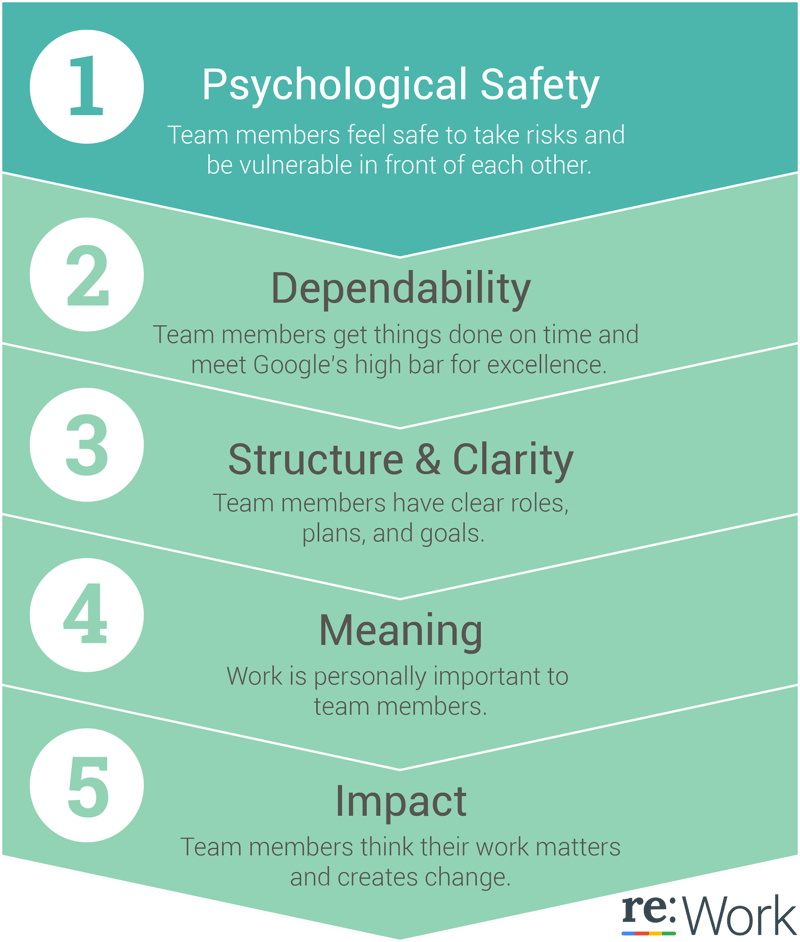
How to develop psychological safety in the workplace
It's clear that fostering psychological safety within your workplace can have many business benefits. But what are the best ways to develop that safe feeling with employees? Immersive simulations can be a powerful part of the L&D toolkit if you’re looking at how to develop psychological safety at work.
- What is psychological safety?
- The four stages of psychological safety
- Benefits of psychological safety at work
- Psychologically unsafe workplace - 10 red flags
- Signs of psychological safety
- How to increase psychological safety - advice for leaders
- Leveraging immersive simulations
- In summary
What is psychological safety?
In her highly influential work at Harvard Business School studying behavior in work teams, Dr. Amy Edmondson gave the following definition of psychological safety:
"a shared belief held by members of a team that the team is safe for interpersonal risk taking"
While the concept goes back over two decades, Google popularized the term psychological safety in 2015 when they published research by their People Analytics team into what makes an effective team at Google. This work was titled Project Aristotle, and pointed to psychological safety as the foundation of an effective team:

Psychological safety in the workplace is more than the self-assuredness of any one individual. It’s an organizational culture that defines how new team members are welcomed and how dialogue occurs with the collective goal of continuous improvement and high performance.
The goal is to eradicate the idea of blame for mistakes and instead see them as milestones on the way to team success.
The four stages of psychological safety
In his book “The Four Stages Of Psychological Safety”, Timothy R. Clarke describes a 4-step model that teams can move through, progressing from stage 1 to stage 4.
These are:
- Inclusion safety - members feel safe to belong to the team
- Learner safety - members are able to learn through asking questions
- Contributor safety - members feel safe to contribute their own ideas
- Challenger safety - members can question others’ ideas or suggest significant changes
Some experts have argued that in reality, there are not four such distinct stages through which to progress, and that team development is never so linear. However, there is certainly merit in looking at these four categories as factors to consider carefully and perhaps measure progress against.
Benefits of psychological safety at work
- Increased employee engagement - leading to an energized workforce and higher levels of productivity.
- Increased employee satisfaction and reduced staff turnover - leading to lower recruitment costs.
- High levels of knowledge sharing and idea generation - leading to greater product and service innovation.
- Faster organization-wide learning from mistakes - leading to reduced waste and higher levels of quality.
- Increased raising of issues and concerns - leading to decreased risks in terms of, health and safety related accidents, and regulatory non-compliance.
- Improved reputation as a good place to work - leading to an increased ability to attract top talent.
- All of the above - leading to increased profits.
Therefore, placing a great deal of emphasis on psychological safety is not just an HR exercise to keep employees feeling contented in the workplace – it’s a smart business approach that leaders across the board should take seriously.
Psychologically unsafe workplace - 10 red flags
The most devastating example of a psychologically unsafe workplace was that which culminated in the Chernobyl power plant disaster in 1986, directly killing 31 people and as a result of the nuclear fallout, indirectly killing an estimated 4,000+ more.
In addition to the unsafe design of the power plant itself, it’s perceived that there was a working culture in the Soviet Union at the time of fearing authority and the consequences of raising concerns to leaders.
This culture of fear led to a level of workforce ignorance that allowed a chain of errors to occur, resulting in a steam explosion and the subsequent deadly nuclear explosion.
While this is one of the most extreme examples one could imagine, there are red flags for a psychologically unsafe workplace to look out for in a corporate environment:
- Team members seem reticent about speaking up during important conversations and appear unsure if what they have to say will be well received by peers and managers.
- Team morale is persistently low and employee turnover is persistently high.
- Internal competition appears to outweigh internal cooperation.
- Managers rarely admit their own weaknesses or mistakes.
- Feedback isn’t regularly invited by leaders.
- The status quo is rarely challenged and change feels slow (common in large organizations where a high level of bureaucracy is inevitable).
- Feedback is sought, but open communication from team members seems to paint a more positive picture than anonymous surveys.
- Managers and team leaders are the most vocal during meetings.
- Team members rarely admit that they are feeling overwhelmed or ask for support from peers or their managers.
- There is a measurable, or perceived, lack of diversity and/or representation within the senior leadership team.
Signs of psychological safety
So what does good look like? Here are some of the telltale signs of psychological safety at work:
- Decision making processes are conducted with involvement from team members at all levels in the organizational hierarchy - not just the top table.
- Feedback is sought often - especially from senior leadership in the way of 360 degree appraisals - and it’s not just seen as a token box-ticking exercise.
- You rarely see defensiveness or conflict when feedback is received.
- Ideas and concerns are clearly appreciated by managers and peers when expressed.
- Team members frequently admit their own mistakes, and they are used as group learning opportunities.
- There tend not to be dominating voices during team discussions.
- Team members actively seek learning and growth opportunities.
- There are rarely signs of secrets or gossip.
- Individual success is celebrated - but without burdening the person with additional responsibilities as a result.
- Mentors are in place for underrepresented groups.
How to increase psychological safety - advice for leaders
In her popular TED talk titled ‘Building a Psychologically Safe Workplace’, Amy Edmondson gives advice including the following 3 pillars for leaders and team members to foster psychological safety:
- Frame the work as a learning problem, not an execution problem.
- Acknowledge your own fallibility.
- Model curiosity and ask lots of questions.
By modeling these behaviors, leaders can help develop a culture of exploration and freedom in sharing knowledge and ideas without fear of failure or ridicule.
McKinsey & Company research published in 2021 found that leadership development appears to play a critical role in building psychological safety at work.
Survey data showed that few leaders display the behaviors that instill psychological safety, and employee experience depends greatly on how leaders act.
Those leadership behaviors are trainable though, and investment in this area pays dividends:
While not always addressed to the same extent as other leadership skills, ‘Developing high quality social relationships in teams’ was shown to be the most important skill to address in order to improve each of:
- Supporting and consultative leadership
- Challenging leadership
- Senior-leader inclusiveness
Demonstrating all three of these leadership behaviors was shown to be key to fostering psychological safety at work.
Leveraging immersive simulations
In the corporate environment, interpersonal abilities are no longer seen as just ‘soft skills’ - they are ‘Power Skills’. And, like any other type of skill, Power Skills are not just inherent to the individual. They can be learned and practiced - and trained.
Developing your abilities in dealing with people can be fraught with anxiety; nobody wants to look foolish in front of peers or managers - or worse, cause offense.
When it comes to communicating in a sales or customer service setting, practicing leadership and management skills, or discussing issues around diversity, equity and inclusion (DEI), there’s often no single right or wrong approach. It’s often about improving your abilities in a way that works for you as an individual.
Face to face, group training environments have traditionally been used to develop skills in these areas, but many employees feel awkward in such settings. This is where immersive simulations can be a powerful tool for overcoming learner anxiety.
With simulation-based training, learners can practice interpersonal skills within true to life, virtual scenarios and feel completely free to experiment and make mistakes without fear of failure. Immersive simulations can replicate real-world situations, and the learner can try out approaches to see what works for them, gaining useful and personalized, automated, feedback along the way.
Learners can leverage that feedback to adapt their approach and gradually turn theoretical knowledge into skills - and confidence in using them. This ‘learning by doing’ approach to training brings breakthroughs that may occur at a different pace for each individual - everyone has their own unique ‘Aha!’ moment.
Not only do immersive learning simulations enable Power Skills training at a time and place that suits the learner (important in a remote or hybrid workplace), but they bring a tangible improvement in training outcomes in any location. Immersive simulations have been shown to reduce time-to-competency by between 30 and 50%, getting new hires in position and being productive much faster.
As suggested by the McKinsey research mentioned above, leadership development training is critical to instilling psychological safety in the workplace, and simulations are a particularly powerful way for current and potential leaders to hone their skills.
In summary
Psychological safety is now being seen by leading organizations across every industry as a potential source of competitive advantage.
It can reduce the crippling costs of replacing team members due to low staff morale, and it helps create a strong reputation that attracts top talent.
When mistakes are made, psychological safety helps to turn them into learning opportunities. Through greater communication and knowledge sharing, it also reduces systemic errors and stops many problems happening in the first place.
Psychological safety is a route to faster skills development and employee engagement that helps ideas to germinate, leading to innovation and performance gains.
Developed through effective leadership behaviors, a culture of psychological safety enables individuals at every level, and in turn the entire organization, to thrive.
 Thomas Lewis - Director, Learning Solutions
Thomas Lewis - Director, Learning Solutions
Thomas leads the design and implementation of ETU simulations. Whether built by ETU or in assisting client authors, he strives to ensure that ETU solutions are immersive and engaging while adhering to robust architecture that will lead to powerful data insights. Thomas has over 15 years of experience in designing and delivering learning and training products for corporate clients and national cultural and education stakeholders. He holds a Ph.D. in multimedia education from Dublin Institute of Technology (now Technological University Dublin) where he was a fully-funded, inaugural GradCAM scholar.

